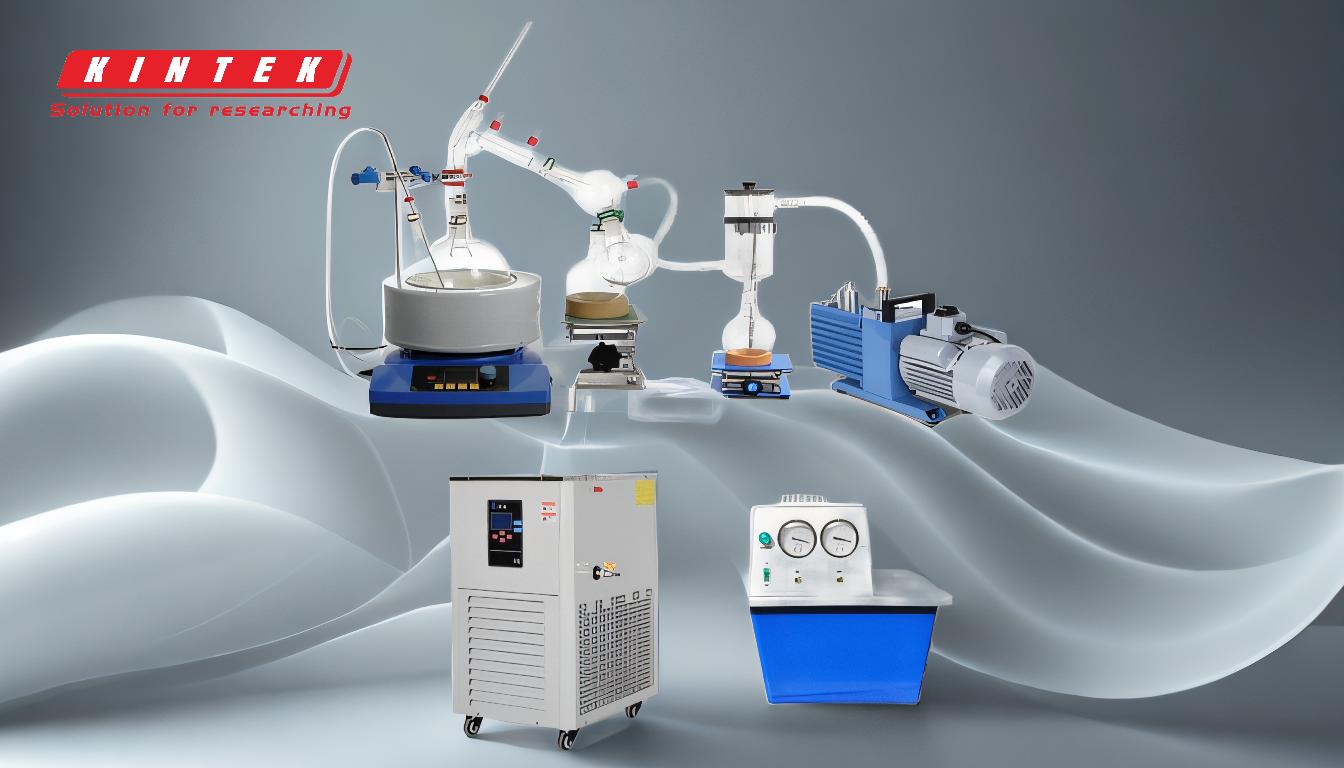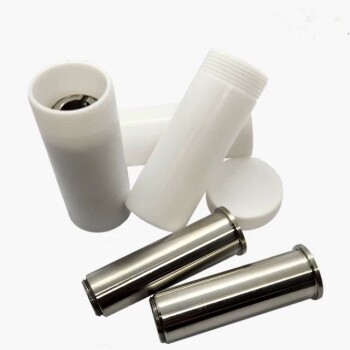Short path distillation (SPD) and wiped film distillation (WFD) are two distinct distillation techniques used to separate and purify compounds, particularly in industries like pharmaceuticals, cannabis, and essential oils. While both methods operate under vacuum conditions to reduce boiling points and prevent thermal degradation, they differ significantly in their working principles, processing durations, scalability, product quality, and cost. SPD is known for its high purity output but is limited in scale and has a longer residence time. In contrast, WFD uses mechanical wipers to create a thin film of material, allowing for shorter residence times, higher throughput, and better handling of viscous or heat-sensitive materials, making it more suitable for large-scale production.
Key Points Explained:

-
Working Principles:
-
Short Path Distillation (SPD):
- Operates under high vacuum conditions, utilizing the different free paths of molecules to separate components without heating them to their boiling points. This minimizes thermal degradation.
- The internal condenser is placed close to the heating wall, allowing for quick condensation of evaporated molecules, which are collected at the bottom.
-
Wiped Film Distillation (WFD):
- Relies on the difference in boiling points of components and requires higher temperatures compared to SPD.
- Mechanical wipers create a thin, uniform film of the material on the heated surface, enhancing evaporation efficiency and reducing residence time.
- The condenser is external, and the distillate is recycled from the top, making it more efficient for continuous large-scale operations.
-
Short Path Distillation (SPD):
-
Processing Durations:
-
SPD:
- Has a longer residence time (10-60 minutes), which allows for more precise separation but increases the risk of thermal degradation for heat-sensitive materials.
-
WFD:
- Features a significantly shorter residence time (1-3 minutes), reducing exposure to heat and minimizing degradation, especially for viscous or thermally unstable compounds.
-
SPD:
-
Scalability and Throughput:
-
SPD:
- Limited in scale and production capacity, making it more suitable for small-scale, high-purity applications.
-
WFD:
- Designed for large-scale operations, with higher throughput and productivity. It is better suited for industrial applications requiring continuous processing.
-
SPD:
-
Product Quality:
-
SPD:
- Produces high-purity distillates with minimal contamination, making it ideal for applications requiring ultra-pure compounds.
-
WFD:
- While it may not achieve the same level of purity as SPD, it still produces high-quality distillates and is more efficient for handling complex mixtures or heat-sensitive materials.
-
SPD:
-
Cost Considerations:
-
SPD:
- Higher operational costs due to its design and the need for precise vacuum control and internal condensation.
-
WFD:
- More cost-effective for large-scale production due to its higher throughput and lower energy requirements per unit of product.
-
SPD:
-
Applications:
-
SPD:
- Best suited for small-batch, high-purity applications such as pharmaceutical intermediates, essential oils, and cannabinoid isolation.
-
WFD:
- Ideal for large-scale production of materials like crude oil refining, cannabinoid distillation, and other industrial processes requiring high throughput and efficiency.
-
SPD:
By understanding these key differences, equipment and consumable purchasers can make informed decisions based on their specific needs, whether prioritizing purity, scalability, or cost-effectiveness.
Summary Table:
| Aspect | Short Path Distillation (SPD) | Wiped Film Distillation (WFD) |
|---|---|---|
| Working Principles | Operates under high vacuum, minimizes thermal degradation, internal condenser for quick separation. | Uses mechanical wipers for thin film creation, higher temperatures, external condenser for efficiency. |
| Processing Durations | Longer residence time (10-60 minutes), precise separation but higher risk of thermal degradation. | Shorter residence time (1-3 minutes), reduces heat exposure and degradation. |
| Scalability | Limited scale, suitable for small-batch, high-purity applications. | Designed for large-scale operations, higher throughput, ideal for continuous processing. |
| Product Quality | High-purity distillates with minimal contamination, ideal for ultra-pure compounds. | High-quality distillates, better for complex mixtures or heat-sensitive materials. |
| Cost Considerations | Higher operational costs due to precise vacuum control and internal condensation. | More cost-effective for large-scale production, lower energy requirements per unit. |
| Applications | Pharmaceutical intermediates, essential oils, cannabinoid isolation. | Crude oil refining, cannabinoid distillation, industrial processes requiring high throughput. |
Need help choosing the right distillation method for your needs? Contact our experts today for personalized advice!










